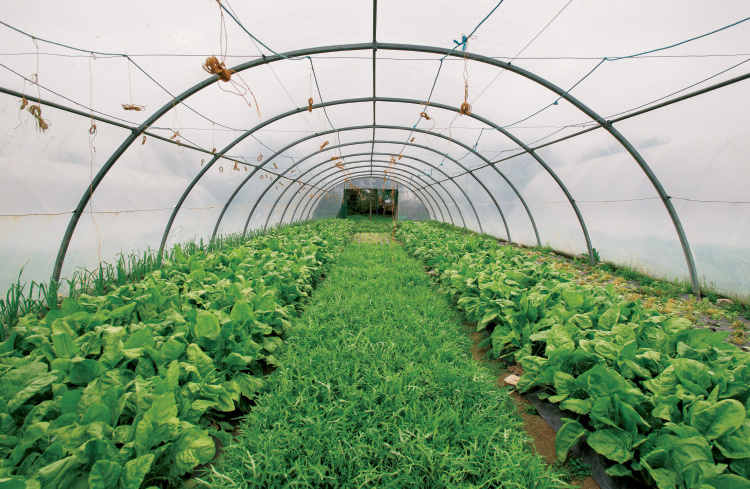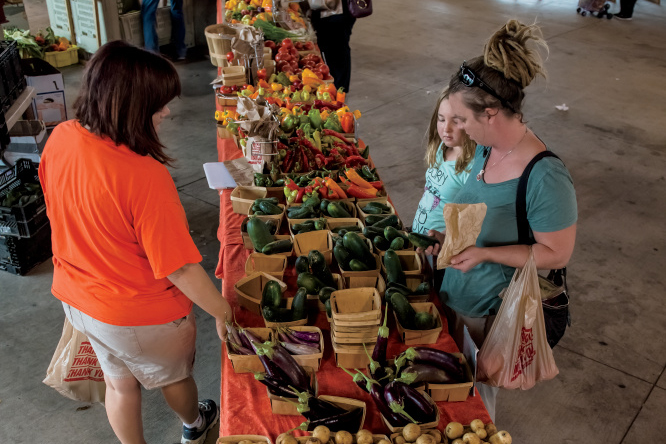Home > Farm > Farm to Table > Hoophouses for Health Helps Farmers with Infrastructure Needs
Hoophouses for Health Helps Farmers with Infrastructure Needs
In partnership with: Michigan Department of Agriculture & Rural Development

While there are many factors involved in living a long and healthy life, it’s impossible to deny the power of good nutrition. But what do you do if you live in an area lacking fresh, local produce? Or worse – what if the budget simply isn’t big enough to fill the fridge with healthy choices?
Fortunately for the residents of Michigan, solutions are popping up to address these concerns. One in particular is a program called Hoophouses for Health.
Hoophouses for Health
A collaboration among the Michigan Farmers Market Association (MIFMA), the Michigan State University Center for Regional Food Systems (MSU CRFS) and the Michigan State University Department of Horticulture, Hoophouses for Health is a program designed to provide vulnerable families with “Good Food” while simultaneously expanding farm infrastructure and season extension capacity for local farmers.
As defined by the Michigan Good Food Charter, “Good Food” is healthy, green, fair and affordable. In short, the food should provide nourishment, be grown in a sustainable manner, treat all involved parties fairly and be accessible across all income levels.
Farmers interested in participating in the program apply to MIFMA to receive funding to build a new hoophouse. The funding comes in the form of a nontraditional, zero-interest, five-year loan. But rather than paying it off with cash, farmers pay down their balance in produce.
Presque Isle Farm
For Molly Stepanski of Presque Isle Farm in Posen, participating in the program was an easy decision. She and her husband moved back to northeast Michigan five years ago to transition a homestead to a market vegetable farm. With no previous experience as farmers, they learned everything they know from other farmers, conferences, the internet and books.
During their research, they heard about Hoophouses for Health. After talking to other participating farmers, they jumped on board.
“We decided to get involved because we wanted to extend our growing season,” Stepanski says. “Not to mention, the program sounded amazing. We could provide fresh, local produce to kids and build our infrastructure at the same time.”

Paying in Produce
Working with community partner organizations, like Head Start and Great Start Readiness Program agencies, MIFMA distributes and reloads market cards to vulnerable families who sign up to participate in the program. Families can use the cards to purchase produce from participating farmers at local farmers markets in their area or directly from the farm.
MSU CRFS also coordinates partnerships between farms and schools, enabling participating farmers to donate produce to contribute to school lunch programs.
Flint Ingredient Company
First-generation farmer Erin Caudell started Flint Ingredient Company with partner Franklin Pleasant six years ago. With backgrounds in horticulture and engineering, they felt uniquely poised to contribute to the local food system.
“Hoophouses for Health is a win-win for farmers and the community,” Caudell says. “The idea of paying for a hoophouse by providing vegetables to families was particularly attractive to us because we care about getting more nutritious food into our community.”
While Hoophouses for Health helped them meet their personal values of providing healthy, nutritious food to local families, Caudell also feels the program uniquely benefits new farmers.
“It’s a great opportunity for farmers to access infrastructure capital they may not have otherwise,” Caudell says. “For us, as new farmers, this really helped us get on our feet and grow faster than we could have on our own.”



